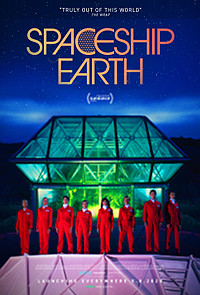| SHADOWS ON THE WALL | REVIEWS | NEWS | FESTIVAL | AWARDS | Q&A | ABOUT | TALKBACK | |||||||||||||
 Shadows off the beaten path Shadows off the beaten pathIndies, foreign, docs and shorts...
On this page:
HOMOSAYWHAT |
KRABI, 2562 |
SPACESHIP EARTH
| |||||||||||||
| See also: SHADOWS FILM FESTIVAL | Last update 3.Jun.20 | |||||||||||||
|
HomoSayWhat Review by Rich Cline | 
| |||||||||||||
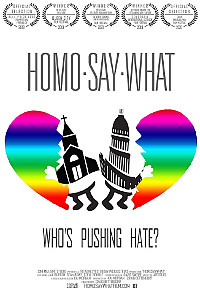 dir-scr Craig Bettendorf prd Kai Morgan narr Kai Morgan with Craig Bettendorf, Kai Morgan, Jax Buresh, Sean Bowe, Steve Scholz, Rusty Smith release US 2.Jun.20 19/US 1h16 Watch it now... |
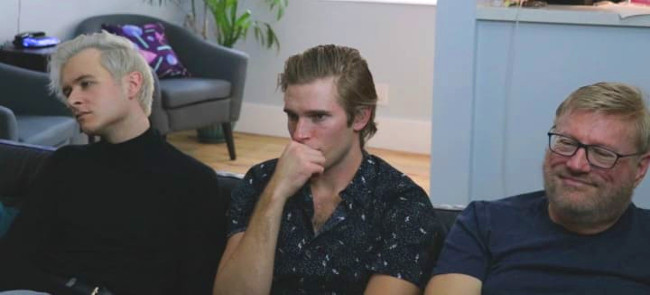 Reclaiming the joke in the title, filmmakers Craig Bettendorf and Kai Morgan explore the emergence of homophobia over the past 60 years. The documentary features remarkable footage exploring the origins of this particular bigotry, and the academic approach is provocative and important. So even if the message is muddled, debunking a conspiracy while invoking another one, this is an important cry for truth on the issue. Institutionalised homophobia has shaped society's attitudes from a faulty thesis that there was some kind of "gay agenda" seeking to corrupt children. These false ideas were used in the 1960s to legislate against gay people and led to national campaigns such as the one spearheaded by Anita Bryant in the 1970s. This traces back to Hitler's pure-blood laws vilifying Jews, as the Nazi theory is recycled word-for-word by American government and church officials. The endemic prejudice is well-documented, even if the film's comments about an organised war on homosexuality are spurious. The doc opens with a government-made fear-mongering public service film from the 1960s referring to gay men as violent, dangerous and mentally ill. And more clips follow, shouting words like "unnatural" and "perversion" to frighten young people about homosexual seduction (as if it worked like that). With these opinions taught in school, bigotry has been woven into the cultural fabric. So it's no wonder that this results in bullying, assaults, suicide and, yes, mass murder. Personal stories of institutional prejudice quoted here are deeply chilling. Along the way, the filmmakers speak with three actors from their TV series Treading Yesterday, millennials Buresh and Bowe and boomer Scholz, who have intriguingly different views. Clearly the younger guys hadn't experienced the vile rhetoric from far-right evangelicals during the 1980s Aids epidemic. The film goes on to grapple with the ongoing religious side of the issue, including a section touching on biblical scholarship. It also makes the point that those who suppress or subvert the facts (including the misuse of biblical texts) are immorally promoting alienation and division. The truth is that there has never been a gay agenda, homosexuals aren't infiltrating anything, and no one's preaching a queer message. The difficult truth is that people like to feel superior to those who are marginalised. The filmmakers trace these attitudes through the decades right into the present day, showing that this isn't actually a phobia: it's a sadistic, hateful reaction against social change. These people aren't anti-gay, they're deeply bigoted on a whole range of issues. And quoting Desmond Tutu, "If you are neutral in situations of injustice, you have chosen the side of the oppressor."
| ||||||||||||
|
Krabi, 2562 Review by Rich Cline | 
| |||||||||||||
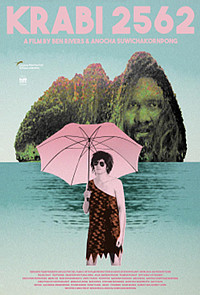 dir-scr Ben Rivers, Anocha Suwichakornpong prd Maenum Chagasik, Ben Rivers, Anocha Suwichakornpong with Siraphan Wattanajinda, Arak Amornsupasiri, Primrin Puarat, Lieng Leelatiwanon, Oliver Laxe, Achtara Suwan, Nuttawat Attasawat, Supin Thinnongjil, Chalee Srimad, Arunya Kardkun, Pissamai Klomkliang, Amornrat Suttikerd release UK 29.May.20 19/Thailand 1h34 TORONTO FILM FEST  Watch it now... |
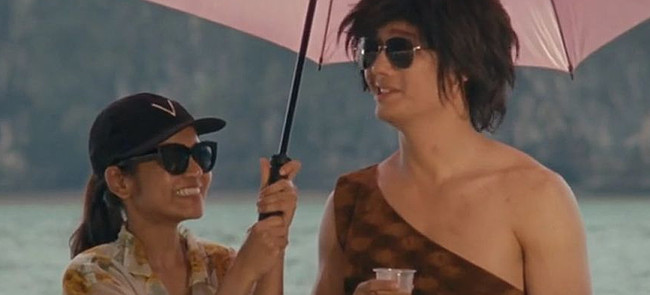 With a loose, drifting pace, this experimental documentary cleverly depicts life in the eponymous region in southern Thailand, where local culture collides with international tourism. British and Thai filmmakers Ben Rivers and Anocha Suwichakornpong cleverly combine observation, dramatised sequences, oral storytelling and offbeat interactions in a variety of settings, carefully avoiding the usual glossy travelogue-style imagery. On the edge of the Andaman Sea, Krabi had a long history before the tourists discovered its natural beauty. And the city is full of life beyond the beach. The camera observes as schoolchildren sing a hymn to their benevolent king. A guide (Puarat) takes a movie location scout (Wattanajinda) out on a boat to visit a historic cave. A young actor (Amornsupasiri) dressed as a caveman is filming a TV advert, then has a surprise encounter with a real native. A hotel receptionist shares stories about seeing ghosts. A former boxer (Srimad) enjoys just watching the world go by. These and other strands swirl around and mix together unexpectedly, creating the sense that past, present and future are entangled uneasily in this place. The film is also infused with a witty sense of moviemaking itself, including references to blockbusters shot on nearby islands, including The Beach and The Man with the Golden Gun. A projectionist (Leelatiwanon) offers a tour of a long-closed cinema, and there's a surreal black and white sequence, apparently from a banned Thai movie. The film's focus is on the people rather than the stunning scenery or colourful wildlife, both of which remain in the background. Even so, there are languorous shots of still water, soaring cliffs and unusual local critters. And caves feature frequently, both with present-day visitors and glimpses of neanderthals (Suwan and Attasawat) who lived here thousands of years ago and painted on the walls. Just as much attention is paid to the bustling town, its daily currents of life and unusual public art, plus swarms of tourists in the sea. The film has a mesmerising charm, with its unexpected assembly of images and stories, the rhythmic soundtrack and a wide range of fascinating locations. All of this is underscored with a wry sense of humour, which gives the doc a matter-of-fact emotional resonance. There are even some hilarious visual gags. The way various scenes are juxtaposed can get a bit awkward or pushy, and the tone is sometimes downright sleepy, but there isn't a single shot that doesn't provoke a thought or feeling.
| ||||||||||||
|
Spaceship Earth Review by Rich Cline | 
SUNDANCE FILM FEST Watch it now...
| 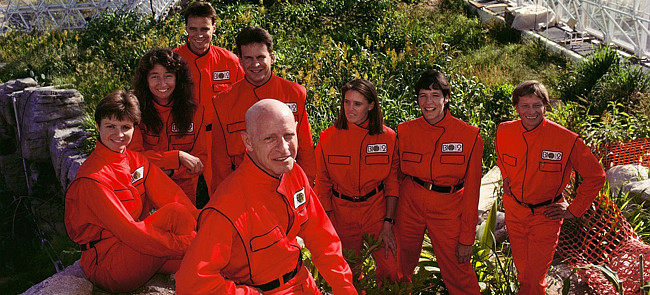 With a straightforward structure, this documentary chronicles a movement that feels like a mix of groovy theatricality, prescient science and cult-like devotion. The escalating scale of the mission is incredible, as these intrepid young people aspire to do what has never been done. Mixing new interviews with wonderful archive footage, filmmaker Matt Wolf tells the story simply, letting facts grab the interest while highlighting important issues from unusual angles. In 1991, eight people moved into a futuristic biosphere in the Arizona desert, where they lived for two years in a precursor to interplanetary travel. The project began 25 years earlier in San Francisco, when Kathelin and her neighbour John, a Harvard MBA, gathered a group of counterculture friends to start a drug-free collective combining science, art and business. Fleeing commercialism, they first moved to New Mexico and built a ranch, then later a ship that sailed around the world, climaxing in their Biosphere 2 project in Arizona, where outside pressures began to cause problems. The film carefully traces this movement from the inside, with telling reactions from the media and their sponsors. Far ahead of his time, John predicted climate change problems in the late-60s, so stressed sustainability, collectivity and inclusivity. Over the following decades, the team gained numerous skills (from ship construction to animal husbandry), feeling free to pursue knowledge. They also funded themselves through long-term businesses established around the world. But rumours swirled that this was a cult, because of John's naturally compelling charisma. But John refused to allow followers into the group: he only wanted free, independent thinkers. Over the decades, their work was carefully and beautifully documented on film. Inside the biosphere, their research made important environmental discoveries, but the media began to debunk the work, treating it as a stunt. And evasive project spokespeople made journalists even more suspicious as issues with food and oxygen created problems. Two years after completing the mission, the biosphere was taken over by bankers (ironically under the control of Steve Bannon) looking for profit rather than science. The film has a slightly sleepy tone, recounting the story without flourishes. But the participants tell witty anecdotes. It's also haunting that the media threw out the ecological message to sensationalise this as a doomsday cult. So these people feel that their life's work was stolen from them. This is a scary depiction of that point in history when everyone knew what needed to be done to repair the planet, then money changed the agenda, ramping up destruction instead. But all of the biospherians are still a "high-functioning family" working on earth-healing projects.
| 
See also: SHADOWS FILM FESTIVAL © 2020 by Rich Cline, Shadows
on the Wall
HOME | REVIEWS | NEWS | FESTIVAL | AWARDS
| Q&A | ABOUT | TALKBACK | | ||||||||||


